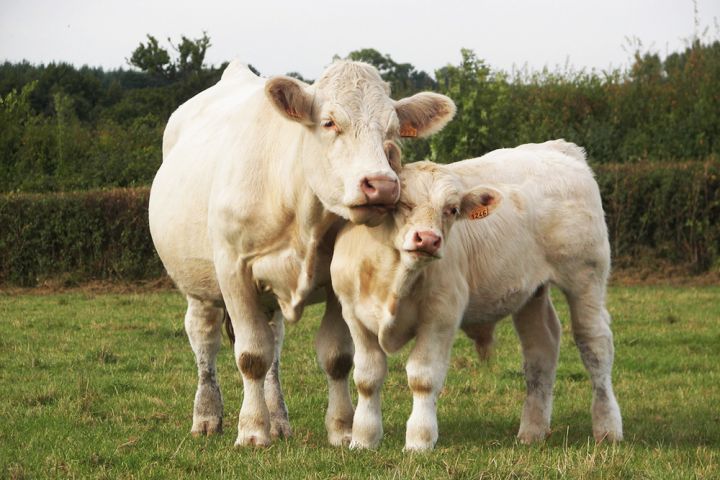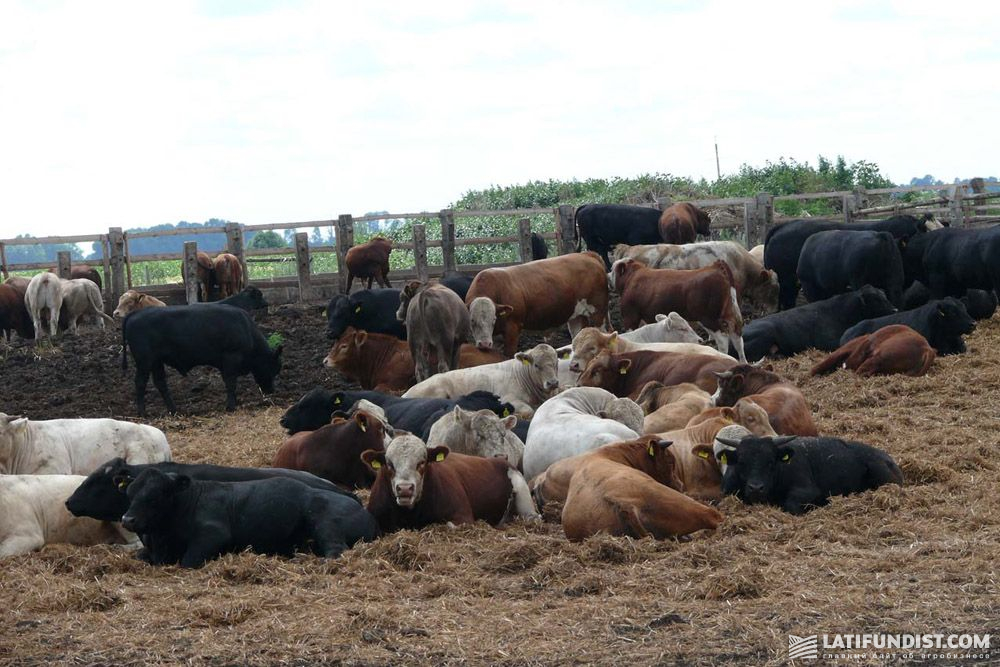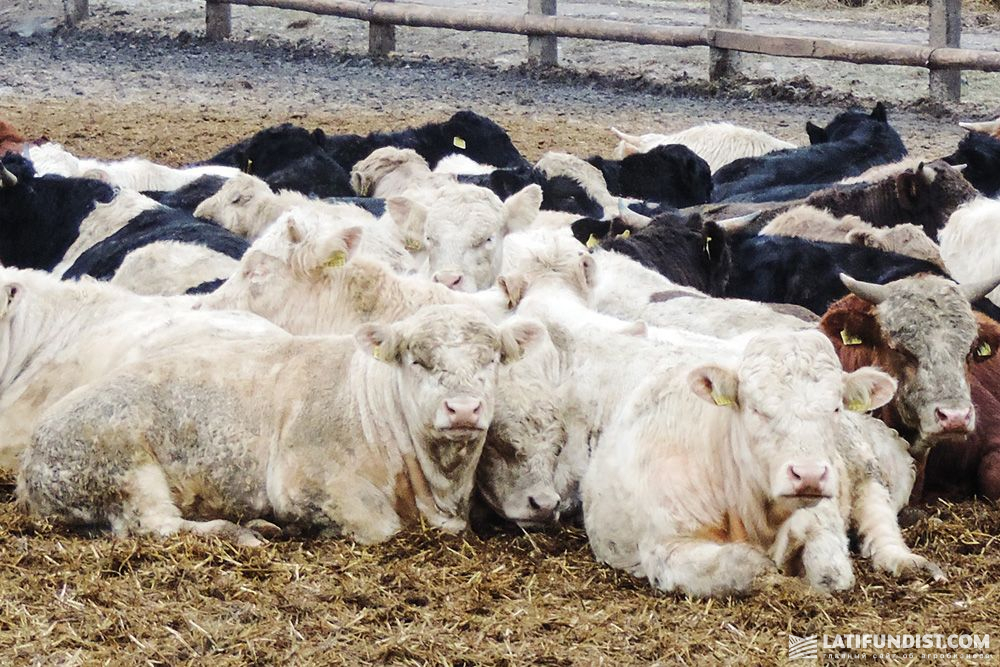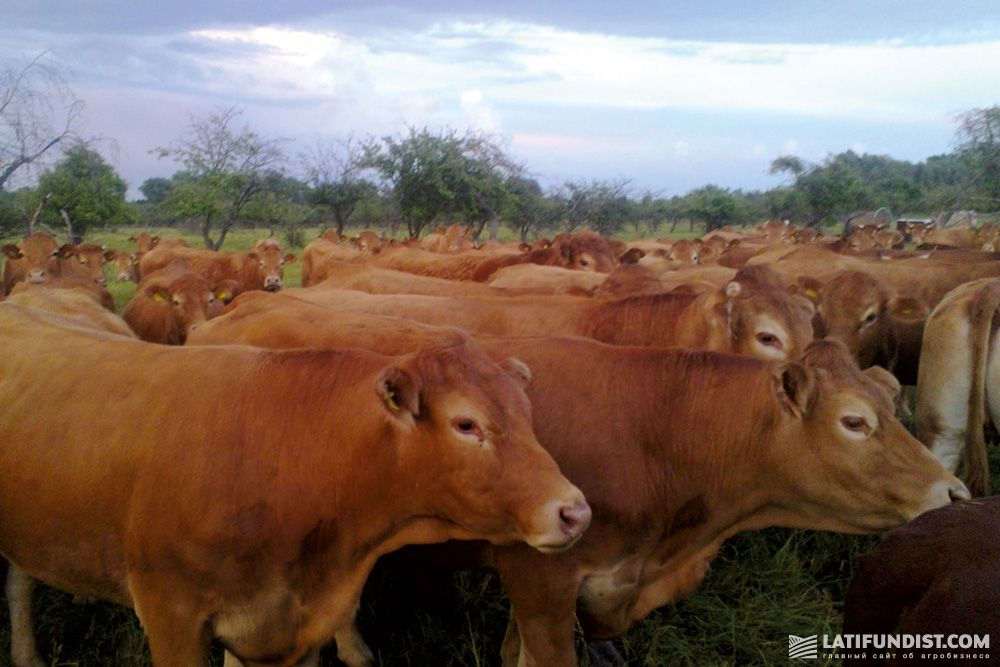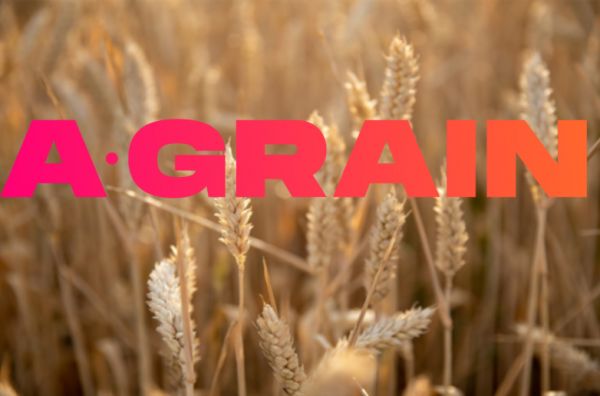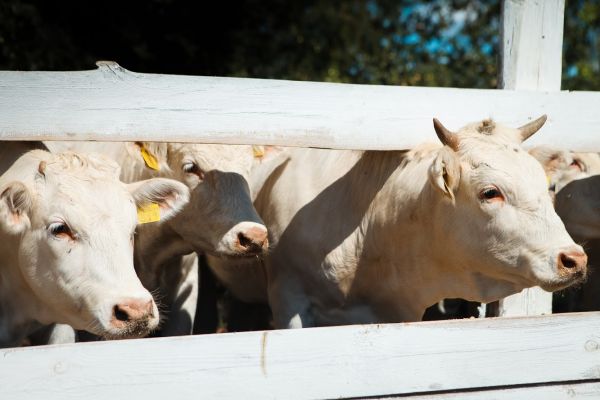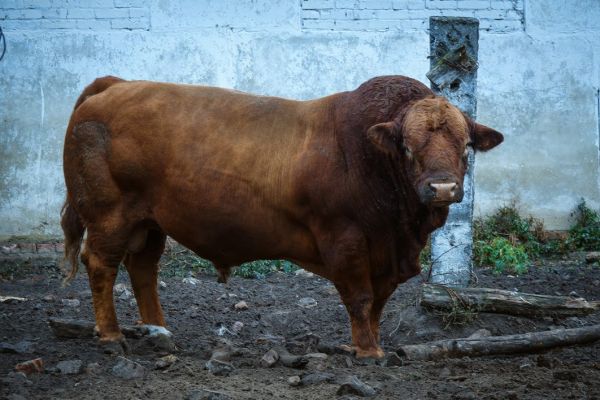Profitable Livestock Business: Who Owns 15% of All Livestock in Ukraine
7 years ago dairy and livestock in the Agrain group were lossmaking businesses supported, to some extent, by the crop production. But things have changed dramatically when the company hired a new livestock managing team. The company has closed lossmaking farms, adjusted the diet of the livestock, and replaced the staff.
Yuri Gudz, the Head of the Livestock Branch of the Agrain group told Latifundist.com about the new stage of livestock development in Agrain, how the idea of pig farming stimulated the whole agro group, and whether the holding needs help from the state.
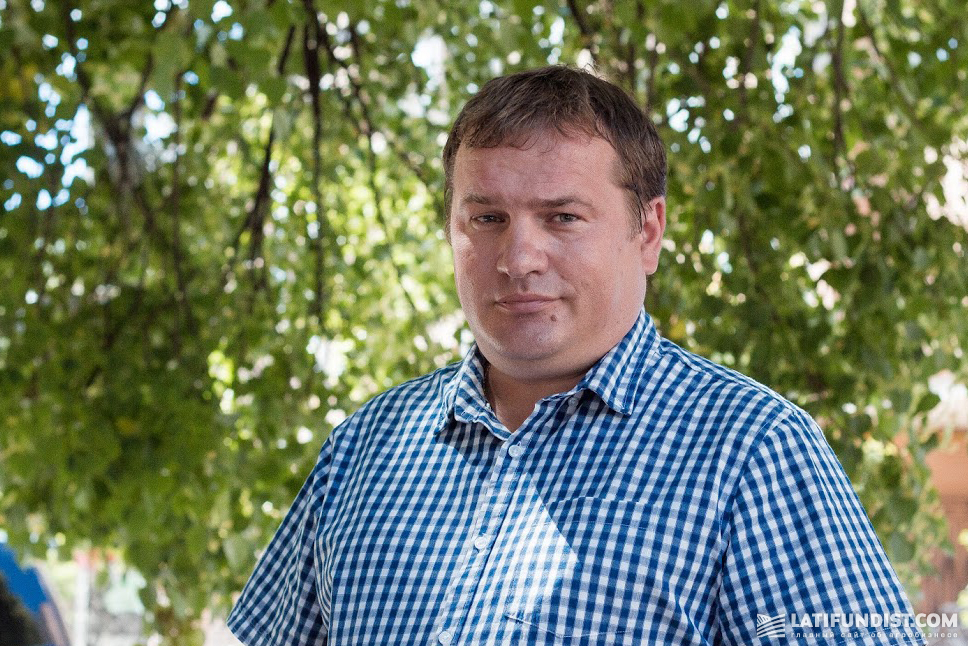 Latifundist.com: Yuri Alekseevich, could you tell us about the state of the livestock business when you joined Agrain?
Latifundist.com: Yuri Alekseevich, could you tell us about the state of the livestock business when you joined Agrain?
Yuri Gudz: At the moment, we are successfully involved in pig farming, dairy, and specialized meat cattle breeding. When I joined Agrain in 2009, the company had already been developing the branches. My task was to optimize the livestock branch and turn it into a profitable business. In 2009, dairy and livestock business were both lossmaking, and pig farming was only developing.
Latifundist.com: What has changed over the 10 years under your management?
Yuri Gudz: Our pig farming is now concentrated in the Odessa region. Three facilities are located in the Agroprime Holding. The first one is a 200 sow complex, the second facility is a sow farm producing 30 thousand swine per year. Two years ago, we also started a promising project: we buy pigs weighing 25-30 kg and fatten them to the marketing weight of 100-110 kg. This third facility annually produces 6 thousand head.
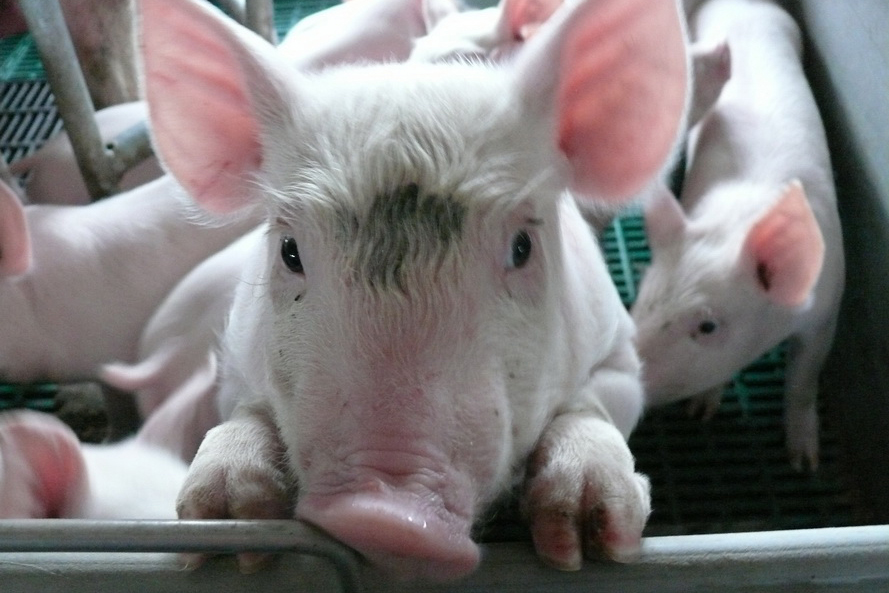 Latifundist.com: What about cattle production?
Latifundist.com: What about cattle production?
Yuri Gudz: We have two dairy cattle-breeding farms. The first 700 head farm — Agroset — is located in the Kharkov region, the second farm — Agrovit — is located in the Cherkassy region with 2000 head of cattle, 700 of which are cows.
Meat cattle-breeding is concentrated in the Agricore Holding in the Chernihiv region with 6000 head of cattle. According to the State Statistics Service, as of January 1, 2018, there was 47.4 thou. head of meat cattle in Ukraine. If we take the real figure, which I know because I travel a lot around the country and keep in touch with colleagues, there are about 40 thou. head of meat breeds today. Given that we have 6 thou. head, 15% of Ukraine's livestock is concentrated in our company. Five years ago, there was 100 thou. head of cattle in Ukraine. Despite the trend for reducing the number of meat breeds in Ukraine, we are not going to follow this path.
The fate of the livestock branch
Latifundist.com: Did the company consider slaughtering the stock during the lossmaking period?
Yuri Gudz: We suffered financial losses, and we did think about wrapping up the livestock business which would essentially mean slaughtering the stock. But I am grateful to the owner of Agrain for believing in the branch and keeping the stock. Time has proved it was the right move.
Latifundist.com: What arguments helped to convince him to keep the livestock?
Yuri Gudz: We discussed the situation. I shared my vision and explained how I see the branch in 3-4 years. Why that span? Because that is the length of the production period. It takes 2.5 years after the birth of a calf before we can monetize it. Owing to our shareholder’s patience, we saved the branch. It has been profitable for 2 years already.
Latifundist.com: What helped you make it profitable?
Yuri Gudz: The technologies, the right local management, or to put it better: a systemic approach to all that matters in producing the end result. Besides, we’ve been exporting about 90% of the livestock for 3 years in a row, we hardly deliver anything to the domestic market.
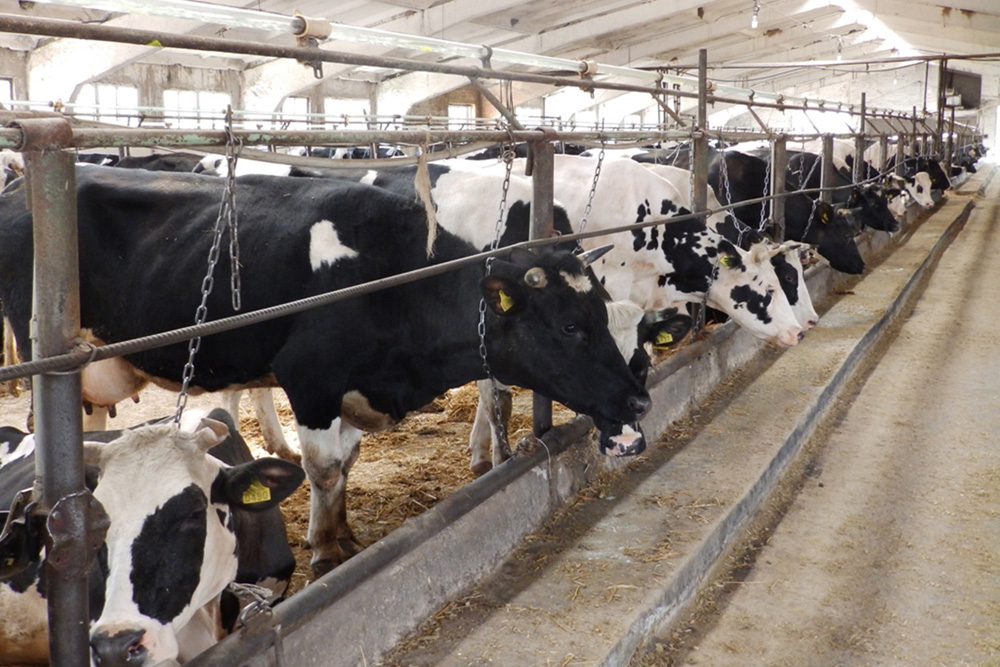
“We are selling a Mercedes at the price of Zaporozhets,” said the owner five years ago. Back then, the Ukrainian market did not take into account the difference between a bull of a meat breed and a bull of a milk breed. All livestock fetched the same price at the market. Today, the prices significantly differ in domestic and foreign markets. In Ukraine, the bulls of dairy breeds (Holstein, red-brown, black-brown, etc.) cost 45-46 UAH/kg, the specialized meat breeds (Charolais, limousine, Aberdeen, Polissya, etc.) — 60-65 UAH/kg. The difference is c.40-50 per one kilo.
Latifundist.com: What are your export destinations?
Yuri Gudz: Last year we exported almost 80% of cattle to Lebanon. There were limited exports to Georgia and Azerbaijan.
Latifundist.com: Are there plans to develop a processing business?
Yuri Gudz: Processing is very different from breeding. There are different marketing rules. Currently, we target the liveweight market only. We plan to increase the number of head for fattening. By buying livestock, we’ve recently launched a 1.5 thou. head fattening farm at Agricore.
Latifundist.com: How many cattle do you want to have? What is the optimal number?
Yuri Gudz: Currently, we are working on having 10-12 thou. bulls for fattening in the Agricore Holding. Our aim is to have enough cattle to export a ship of cattle every month. A minimum shipload is 500 tons which is 1-1.2 thousand head of cattle. We can reach that number in about a year and a half.
Latifundist.com: Was there any Maths behind the arguments you presented to the director when you discussed keeping the livestock business? We ask because there is an agro holding in the Chernihiv region that had to slaughter the cattle seeing no profit in keeping the business.
Yuri Gudz: You need to have a good understanding of the breeding process and a good team, who can put knowledge into practice, to calculate the profit correctly. If there is no understanding, the calculation may overestimate or underestimate the potential gain. The estimated profit may look good on paper, but it will actually amount to zero in three years. 
Latifundist.com: What does the understanding you’ve mentioned include?
Yuri Gudz: That is just one side of the medal. I’d rather tell about the other side. When I started working for Agrain, I analyzed the branch, assessed managing problems and pitfalls, but when I tried to change something I faced staffing problems. I had to replace previous local managers and workers with people who shared my vision of the branch development. The first positive changes were obvious in a year. Four years later (I was a year behind my initial promise of getting the business off the ground in three years), we’ve made livestock profitable.
Latifundist.com: So, it is the team that matters more than anything else?
Yuri Gudz: Yes, the right team is crucial.
Latifundist.com: How did you manage to find the right people? Had you already been acquainted with them? What was the recruitment process?
Yuri Gudz: I went for all the options: hiring agencies, acquaintances, colleagues. I must say we got very lucky to have found Oleksandr Budnyk. He was recommended to me by a colleague. He had just returned from Australia where he worked in meat cattle breeding. We met him and agreed that he was just the right person for the job. We are very happy with the decision to hire him. He shows very good results.
Latifundist.com: Don’t you think that Ukraine has virtually abandoned livestock breeding? It is hard to find quality beef at stores these days.
Yuri Gudz: The problem is that there is no beef food culture in Ukraine. Not all Ukrainians can afford buying it. The pattern of meat consumption shows that chicken meat takes the first place, pork — the second, and beef — the third. Despite that, we have opted for the livestock business.
Latifundist.com: Specialized meat cattle breeding?
Yuri Gudz: The technology of specialized meat cattle breeding fundamentally differs from other technologies. We do Not milk cows. When a calf is born, it stays with its mom and feeds on her milk. Then, we take it for intensive fattening. When it is 12-14 months of age, we sell it.
Latifundist.com: What breeds do you have?
Yuri Gudz: Currently, we have 7 breeds: Aberdeen, Angus, Charolais, Limousine, Beef Simmental, Polissya beef and Southern beef. Taking the market into account, we primarily focus on three breeds: Limousine, Charolais, and Aberdeen. They constitute 70% of our livestock. Other breeds are represented by small numbers. 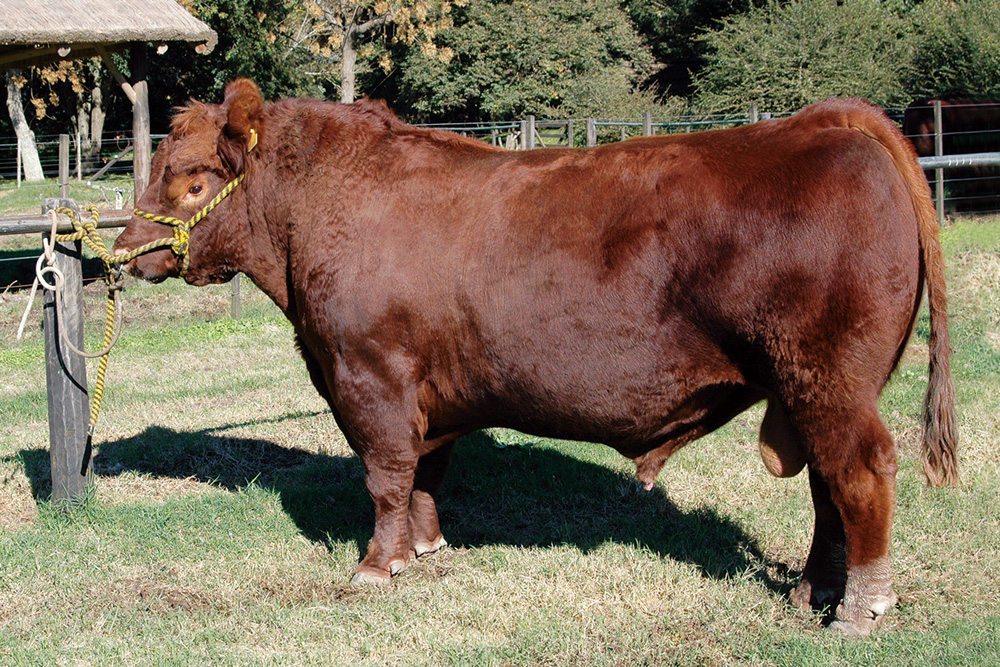
Latifundist.com: How has the technology changed under your management?
Yuri Gudz: One of the issues was that much money was spent on reconstructing the sheds. We’ve implemented an American model of cattle farminng according to which the stock grazes in the special open-air areas all year round. We’ve tried to make our production technology more economical.
We’ve also revised our forage. They used to feed young cattle on concentrate feed which contains grain. Therefore, it is expensive. We revised our technology of feed production and hay and silage making focusing on quality and quantity. Today, we have reduced concentrate feed to a minimum and use it only for fattening.
Latifundist.com: How many hectares are used for feed crops?
Yuri Gudz: It is 1 thousand ha at the moment.
Latifundist.com: What do you make of creating your own feed center like other agro holdings do?
Yuri Gudz: We’ve chosen a different path. When I started here, we had 4 or 5 feeding farms. I would come to the Agricore Holding at 7 a.m. and finish my rounds at 9-10 p.m. with 750 km on the clock. We have chosen concentration and specialization. We have only three mother-stock farms left and one 2000 head feeding farm.
Latifundist.com: This begs the question about the employees of the farms? What happened to them?
Yuri Gudz: The question should not be about the past, but about the present. At the moment, it is problematic to find people willing to work at the farm. People living near the Chernihiv highway are looking for a job in Kyiv. Our qualified specialists make UAH 8-10 thousand per month on average, but people are picky today. They do not want to look after bulls. My colleagues in Western Ukraine report the same problem. We match the prices to the European standard, but people are still unwilling to work in the livestock industry.
There is a shortage of average workers, it is even worse with specialized workers. We trained the specialists we have today ourselves.
Some farms were partially closed because of the staff shortage. There were no social issues caused by the closings because they did not happen overnight. Some specialists were transferred to other farms of our company.
Double the milk yield!
Latifundist.com: Let’s talk about the dairy cattle breeding in Agrain. How is it going?
Yuri Gudz: There is 2700 head of cattle in Agrovit and Agroset in the Cherkasy and Kharkiv regions in total. 1100 head are dairy cows. We’ve been interbreeding Ukrainian Black Pied cattle with Holstein cattle for 6 years at Agroset (the company is a member of the Association of Milk Producers). In other words, the Agroset farm annually producers 8-9 thousand kg of Holstein milk. The changes in the dairy branch have started with the new technologist. When we were looking for new people we wanted managers with the knowledge of breeding technologies or those who could learn fast.
Latifundist.com: What feed do you prioritize for the dairy branch?
Yuri Gudz: We lay emphasis on the basic quality feed: good silage and hay.
Latifundist.com: What is the right diet for cattle feeding in your opinion?
Yuri Gudz: We had some transitive periods before we developed our approach. When I came to work here, we first relied on the “green conveyer” model. In fall and winter, the cattle were fed on silage and hay, and in summer, they grazed in the field. Back then, we annually produced 3-4 tons of milk per cow. Later, we moved to homogeneous feeding: the cows eat silage and hay all year round. No grass feeding. Due to it, we have managed to increase the milk yield by 1.5-2 times.
Latifundist.com: How much milk do all companies of the Group produce daily? Who do you sell it to?
Yuri Gudz: That would be about 12 tons of milk in total. Agroset cooperates with Wimm-Bill-Dann, Agrovit — with Roshen.
Latifundist.com: How much should a liter of milk cost for a company to turn at least minimal profit, by your own estimation?
Yuri Gudz: Ukrainian prices almost match the European ones. If we take the price dynamics for this year, the price has dropped a bit to UAH 8-8.5 per liter, but that is due to the milk season. In winter, the price may reach 10 UAH/liter. It is not the price that matters, though, it is the efficiency of production. 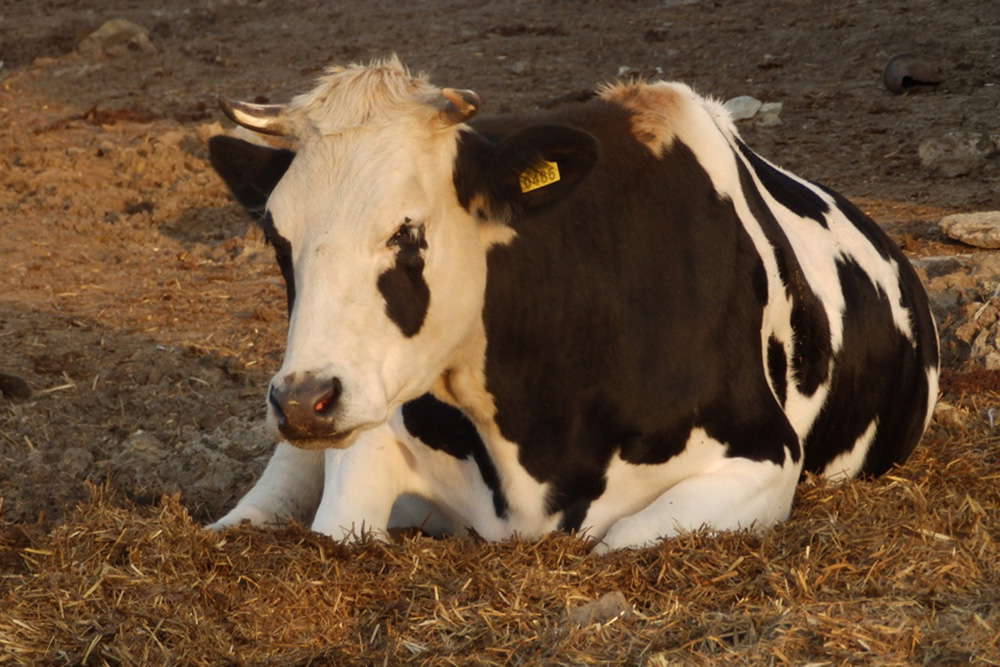
Latifundist.com: Do you have a feeling that livestock is “a poor relative” of crop production, as they say, since the latter is more profitable.
Yuri Gudz: That was what I thought when I started working here. Back then, livestock production was viewed as a social project. I felt like “a poor relative” myself. But when I showed our shareholders the other side of cattle breeding, it became obvious that things could change. To give you an example: Agroset used to have 400 head of dairy cows and needed 900 ha to cater for the herd. Today, the number of the cows is the same, but we need only 350-400 ha which means we have increased our productivity by two.
Latifundist.com: Have I understood it correctly that when you started the job, you didn’t ask for any additional investments; all you asked for were 3-4 years for development?
Yuri Gudz: That’s correct, but it applies to meat and dairy breading only. The pig farming was still a new branch: there had already been pig sheds and the sow farm had been working since 2008, but the production complex was launched under my management.
Setting the stage for pig farming
Latifundist.com: Why have the company management decided to go for pig farming?
Yuri Gudz: As far as I know, the owner of the company initially tailored the company’s business model to pig farming. But the company owned no land to produce feed for the pigs. So, they started with agriculture to get back to pig farming later.
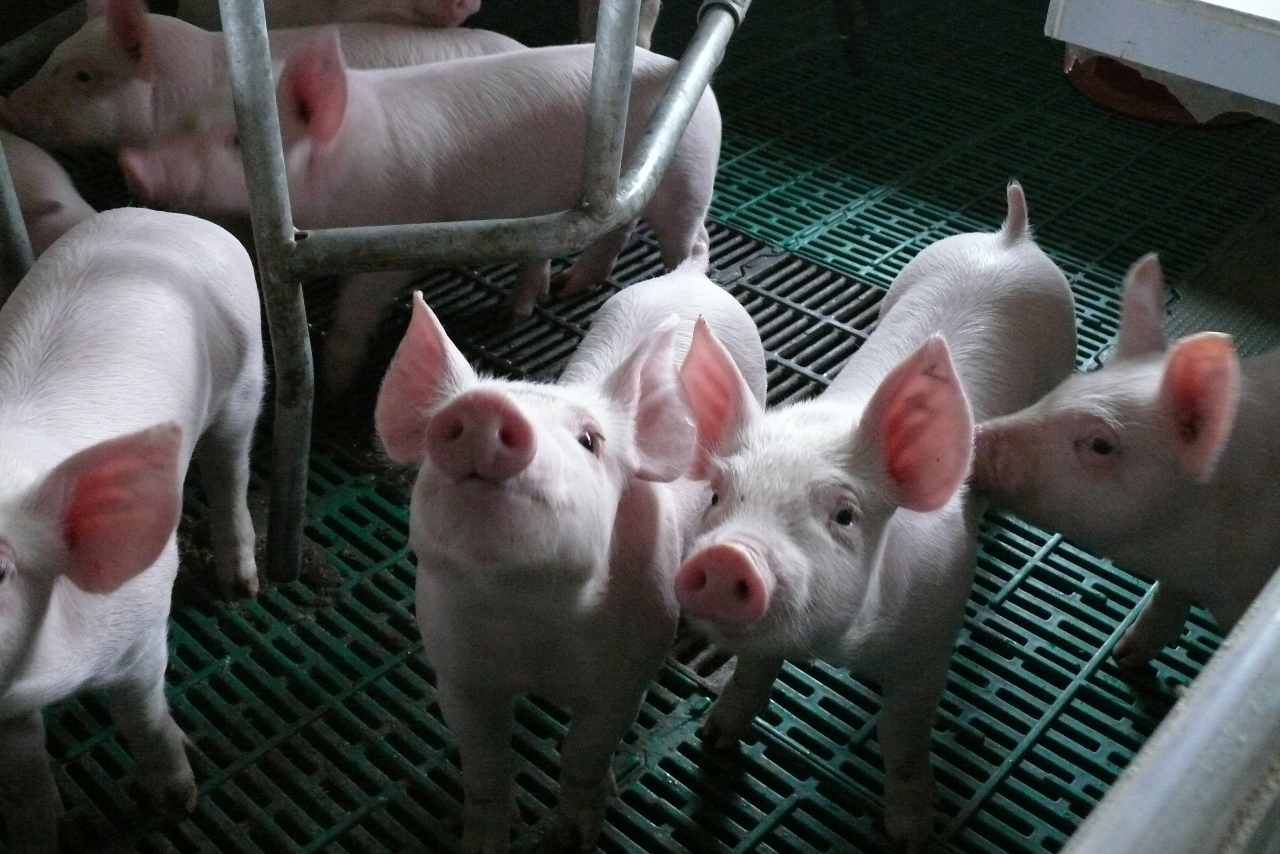
Latifundist.com: How profitable is pig farming today?
Yuri Gudz: Pig farming is a profitable business.
Latifundist.com: Is it profitable if one supplies the domestic market?
Yuri Gudz: This year we’ve been solely involved in exports. In 2016-2017, our company exported a large number of liveweight pork to Georgia. This year, the country’s prices can no longer compete with the domestic prices. It is temporary, though, until the market fills up with domestic or imported pork. Today, the liveweight product costs 46-48 UAH/kg on the domestic market, in Poland, the price is 40-42 UAH/kg which means that it is cheaper to import the pork from Poland than to buy it at home, even if we take the customs clearance into account.
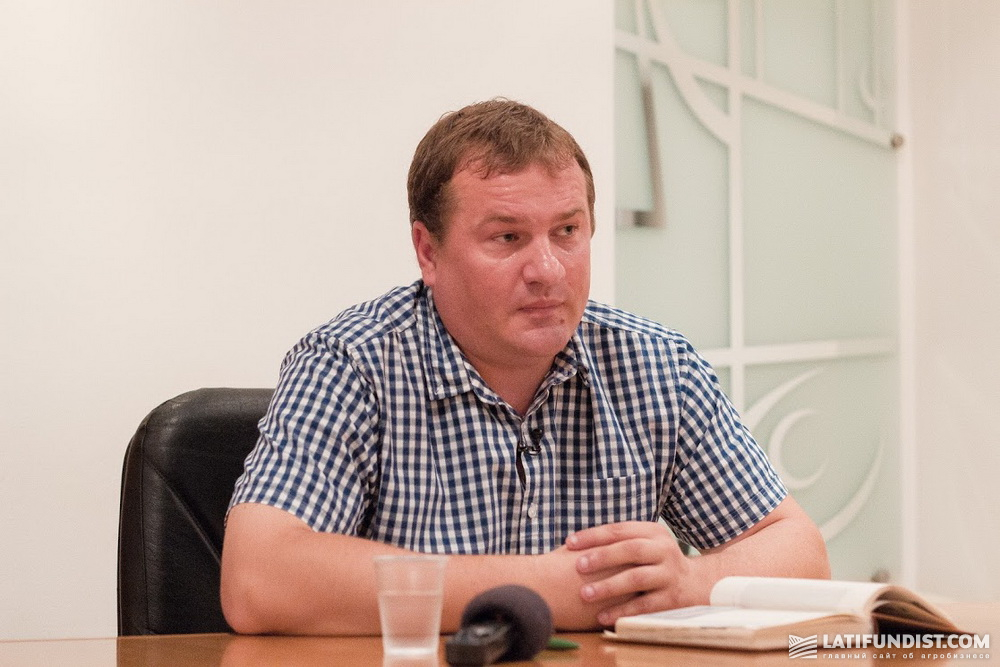
Latifundist.com: And the last, global question, so to speak. What could change the “poor relative” status of cattle breeding in agi business? Should there be any government initiatives?
Yuri Gudz: To tell you the truth, we’ve learned to cope without any government support. The main concern is that the government doesn’t meddle with the business. Political and economic stability, on the other hand, is very important, because the production cycle lasts several years in the livestock business. For instance, we have not been able to make any predictions about meat cattle breeding for 2.5 years already. The whole branch seems to be disappearing. There are subsidies for the business in France, Germany, and Austria. We, however, pay 10% of the export duty to the state. Besides, there are discussions of increasing it to 20% which would render it unprofitable for the producer.
Latifundist.com: Thank you for the talk.
Aleksei Beskletko, Konstantin Tkachenko, Latifundist.com

